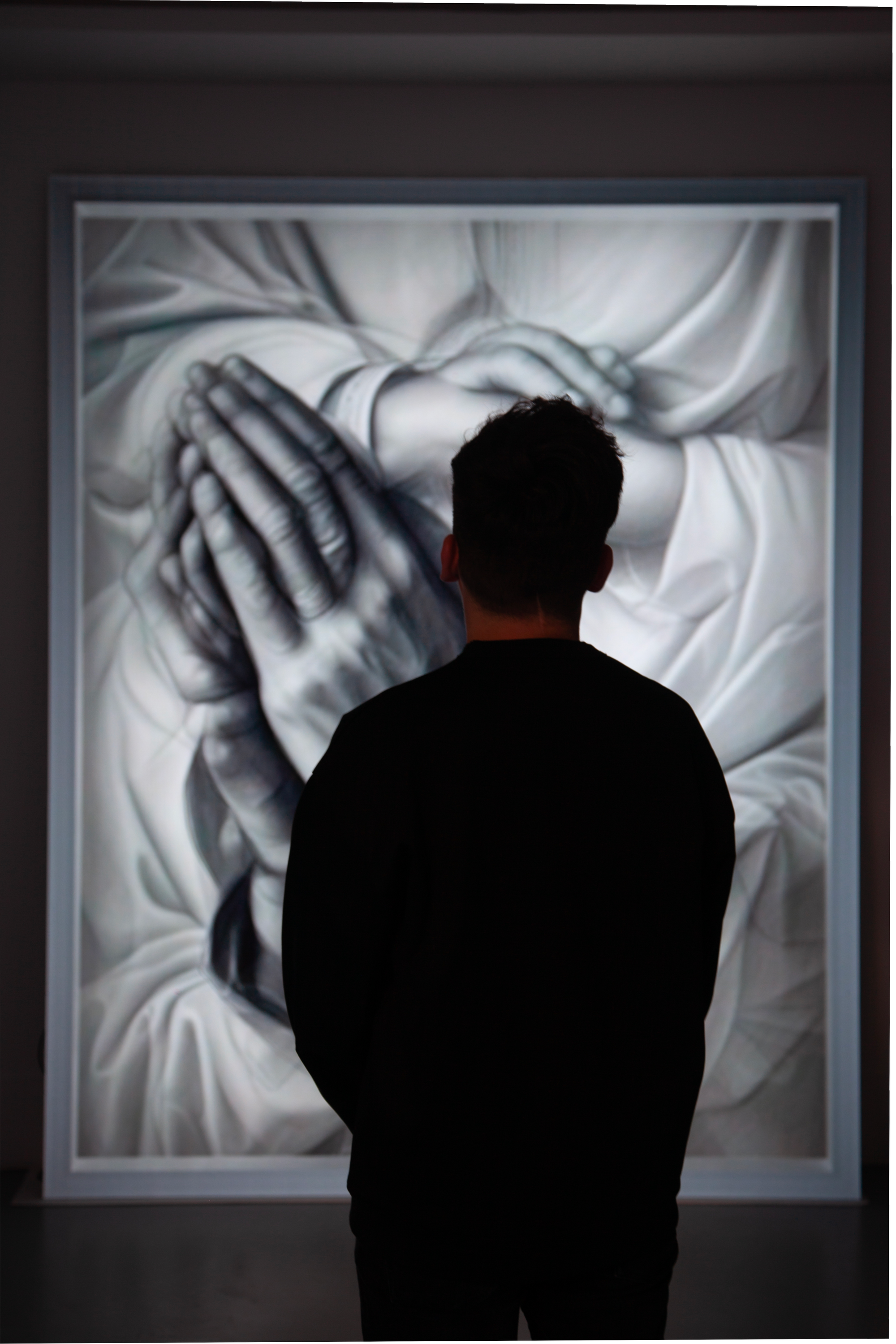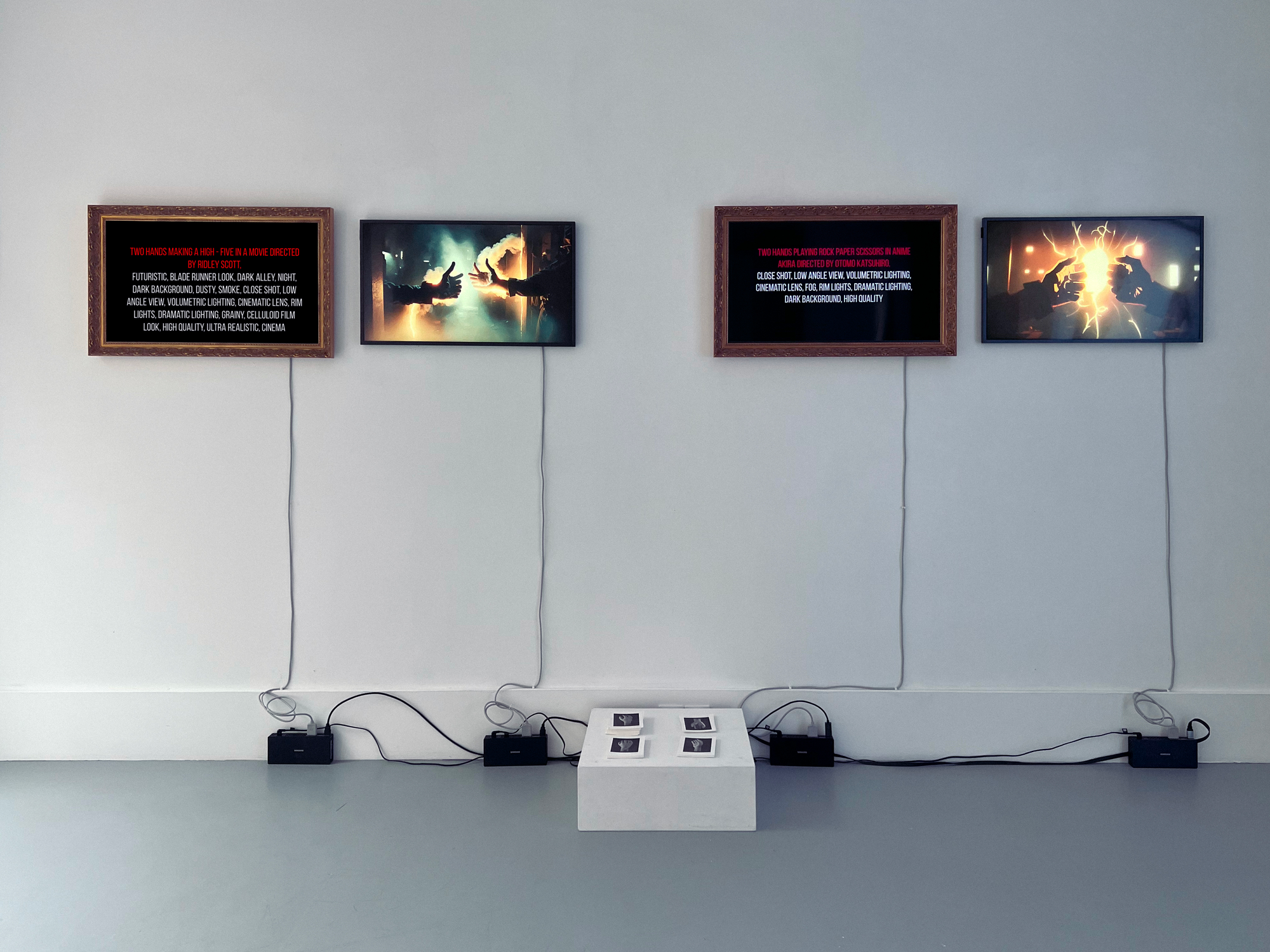Bruno Ribeiro

A conversation with
Bruno Ribeiro
We sat with multimedia artist Bruno Ribeiro to learn about his history with music and cinema, working across mediums, and how being a father has changed him as an artist.

In your career, you've been able to use a lot of different technologies (projection mapping, lighting design, 3d animation, film, media). What are the threads that you feel are consistent throughout your work?
When you have something that's really strong...you don't need to understand it, just feel it.
I try to have a holistic approach. Sound, stage design, lighting, video—they’re different mediums, but they all serve one purpose, which is to answer ‘what is the experience that you want to create for the audience?
I have this narrative thread that unfolds in all my experiences, which is the perception of reality, body, and sound.
I think this came from my early experiences when I used to go to rave parties in France. I was a VJ and so was creating these visuals and I was trying to follow the music that the DJs were playing. I remember seeing all these people, their bodies moving, dancing.
Those early experiences are infused in all my work because I try to make my work very visceral and physical. It doesn't need to be intense or violent, but I want it to be something that's sensorial, that to me speaks to your body, to your ears, and not necessarily to your brain.
Sometimes you feel the work versus understand the work. I really like when I see something and just let go. All the senses get excited. For me, it's the balance when you have something that's really strong, but you don't need to understand it, just feel it.
What if you could transform yourself into a monumental kinetic light sculpture with your voice? Vibrance is an interactive art installation using the voice and human body to reveal the invisible waves of sound.
Can you talk about the practical differences in your process between doing something like Resonant versus something like projection mapping for Regalia?
I think at the end, it's always about how people feel.
With Resonant, I wanted to give power back to the people. You are creating the space with your own scream. So you arrive, it's dark. You just scream and then boom, your voice will fill the place. So this is like your own artwork that will last for a minute.
And of course with Regalia (with Moment Factory), we need to tell the story of a king, but in a different way. We needed to find a different approach that's compelling visually, but still respectful of the story.
For me, the intensity and the approach is the same. It's just trying to make something that will move people. I think at the end, it's always about how people feel. Honestly, whenever I get an idea, I’m asking myself what is the best way to actually bring the story to the people.
But I don't limit myself, because I'm never going to say ‘no, I shouldn't do that because people are not going to like it.’ It's more about asking myself ‘how can I express this idea? How can I make it intelligible?’ How people feel is always something super crucial.

What's the difference between working as a solo artist versus as part of a large collaboration?
Something that's embedded in my career is that I always work between realms. So whether it’s art galleries or arena, commissioned work or solo shows, monumental or institutional, each of these will bring me something new, something fresh that I will then use in different projects.
Everything is connected and everything makes sense because inspiration is everywhere. So I will use what I learned in Regalia (project done at Moment Factory), then I’ll add this knowledge to Vibrance, and then back in Aura Invalides.
Everything is connected and everything makes sense because inspiration is everywhere.
When you work for years on a project with Moment Factory—like Aura Invalides which was two years and a huge project—the timing and the pacing is really different. When you work with a big team, all of your ideas are challenged, which is good actually, because sometimes when you're solo, you just have your ideas but you're never really challenged so you're on your own. I think sometimes just being able to have this constant feedback really helped me grow as a creative director, but also as a solo artist. I really like to be able to have those different opportunities.
What do you see as the future of physical digital convergence?
I'm super thrilled where this is all going because one of my early projects was IRM done at the SAT in Montreal. I was always attracted to these places, because we were able to create these really immersive experiences.
When I’m working on a project, whether it's a live show for Muse or a light installation in Riyadh, what I’m trying to create is a collective experience where the audience connects with the artwork but also with each other.
There are so many ways that you can create physical and digital that it's limitless.
At the start of my career, I wanted to be a filmmaker, and I still feel that I have that driving force within me that wants to create movies, but now I want to create movies that you can actually step inside.
I couldn't be more excited about where physical and digital experiences are going because this is something that I always have in mind and I always tried to create. People want more than traditional 16:9 ratio screens. It's something that's cool, but it's a little bit from the past now and if you can explode the canvas, and be inside the canvas, this is great, right? I'm thrilled by that.
There are so many ways that you can create physical and digital that it's limitless. It's like a new playground for storytelling, for creating, and for new artists to emerge and own, which is really cool.

What else is inspiring you, outside of what people might expect?
Honestly, my biggest inspiration recently is from being a dad. Maybe it's obvious but when I became a father, it grounded me in a way. Now I feel more connected to reality. Sometimes I can be up in the sky and it brings me back to Earth.
My ideas now are more consistent.
When you're looking for inspiration as an artist, you're always tuned in. So whatever happens, your brain is like a radio, always trying to catch some weird frequencies and gather ideas.
Becoming a dad made me more confident in myself. Sometimes I was hiding behind technology, and the more I grow as an artist, also as a human being, the more I feel I am more true to myself.
Other inspiration is dance, movies, books, video games—a lot actually, when I have time, and of course music.
As a baby in a womb, you just hear bass frequencies, so perhaps the human body is just drawn to bass. I don't know, but there is something about that collective experience that really inspires me. Everything I do, I always come back to loud, strong physical experience. No matter what.
Drawing inspiration from the iconography of mining wells with their intricate yet impressive structures, Bruno Ribeiro reinterprets the notion of digging the ground in search of something.
What are you working on now?
I'm working on a new piece for the Paris Planetarium. It's called l’Effondrement (The Fall).
I also recently exhibited my first solo show, “Polydactyly” about the representation of hands by AI. The more I was creating with AI, the more I was inspired, because there is nothing intelligent in artificial intelligence. It's just data sets and probability statistics.
But it’s compelling because it's like sampling video or visuals, like the way people sampled disco to create house in the 80’s or funk/soul thus creating hiphop. And now, with tools like Stable Diffusion, you can create visuals like never before.
After creating Polydactyly, then I made another project called Celluloid for la Fête des lumières in Lyon. I used the first movies of the Lumière brothers, and I remixed them with AI. It created this discussion about new technologies meeting the first movies of cinema.
When I was a VJ, or even creating my first projects, I used to sample a lot of movies, and create remixes. With all the new possibilities of artificial intelligence and generative visuals, it's completely a game changer for me in a way. I'm sure there's going to be a new scene of AI artists that's going to completely blow our minds. Of course there are a lot of debates about copyrights, I don't want to get into this, but still, it's very exciting what's happening.





Polydactyly, in humans, refers to the presence of more than five fingers or toes on each limb. It is also one of the distinctive signs or anomalies that reveal that an image has been generated by an Artificial Intelligence program. Using this unintentional punctum of A.I., Bruno Ribeiro explores the subject and questions himself in his first solo exhibition.
What advice do you have for artists who struggle with maintaining their vision with client work?
I learned that the more you express your ideas, the more you’ll learn to justify or develop your concepts/thoughts and communicate them: you have a better chance to actually make the project that you envision.
I have been lucky because I was granted a lot of creative freedom most of the time, and I didn't have to make difficult compromises.
One thing for sure, is that you never turn off. It's like you are always on, your brain is always buzzing. Always. And there are not enough hours in the day, especially when you have a family, to do what you want.
You have to make some choices. If this is what's most important to you, you just have to deal with it. I have to do what I do because otherwise I will be sad, and this is what makes me happy. When I get to create those projects, when I get to work with amazing people, when I get to travel…this is what my life is about now. Being with my family, being an artist — this is a journey that I love.

